Vitra’s Tip Ton chair catches the eye with its special base structure that allows the chair to be tilted a few degrees forward. According to the research conducted at the ETH Zürich University in Switzerland, a seating pose that slightly reaches forward actives back and stomach muscles and thus helps the body to get more oxygen. Designed by Edward Barber and Jay Osgerby, the Tip Ton chair is made of durable and recyclable plastic, and it doesn’t have any loose mechanical parts. Tip Ton will find its place at the office, kitchen or elsewhere in the house, and it is available in wide range of different colours.
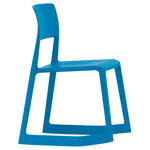

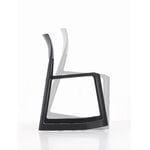
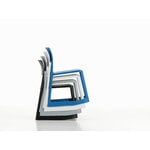
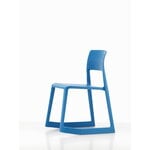
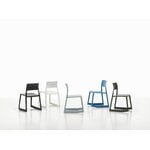
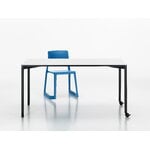
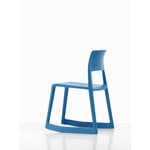
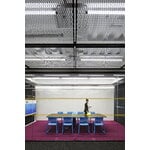
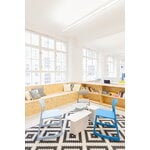
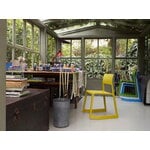
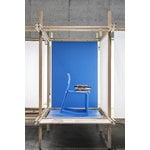
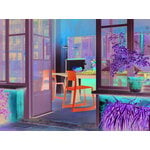
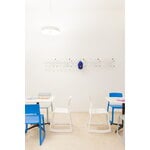
Tip Ton chair, glacier blue
Vitra
Description
Vitra’s Tip Ton chair catches the eye with its special base structure that allows the chair to be tilted a few degrees forward. According to the research conducted at the ETH Zürich University in Switzerland, a seating pose that slightly reaches forward actives back and stomach muscles and thus helps the body to get more oxygen. Designed by Edward Barber and Jay Osgerby, the Tip Ton chair is made of durable and recyclable plastic, and it doesn’t have any loose mechanical parts. Tip Ton will find its place at the office, kitchen or elsewhere in the house, and it is available in wide range of different colours.
Product details (7)
- Colour
- Glacier blue
- Width
- 50.9 cm
- Depth
- 55.5 cm
- Height
- 78.6 cm
- Seat height
- 46.2 cm
- Material
- Polypropylene
- Notes
- Stackable (max. 4 pcs). This model is suitable for outdoor use.
- Product ID
Designer
Edward Barber (b. 1969) and Jay Osgerby (b. 1969) are British designers and founders of the London-based studio Barber & Osgerby, established in 1996. Barber and Osgerby studied architecture and interior design at London’s Royal College of Art and since that, they have collaborated in the fields of industrial design, furniture design and architecture. Their clean, streamlined designs are often inspired by folding and shaping of sheet material, and a fine example of their innovative style is the Tip Ton chair published by Vitra.
View all productsReviews (0)
Sustainability
The Product Sustainability Framework, our criteria of sustainable design, helps you find the most sustainable products in our selection. Read below which sustainability criteria this product has met.
Working conditions & labour 7/9
-
Equal opportunities for all employees
-
Commitment to UN Global Compact, fair compensation for all employees
-
Corporate responsibility requirements defined and communicated for suppliers
-
Systematic work for improved inclusion and well-being in the workplace
-
Transparent supply chain
-
Suppliers' compliance to a code of conduct ensured
-
Compliance to the UN Guiding Principles on Business and Human Rights ensured in the supply chain
-
Direct suppliers audited and certified
-
Support for community involvement in the supply chain
Eco-friendly production 7/9
-
Fair and resource-wise water-use in production
-
No incineration or landfilling of returned items
-
No use of endangered species as materials
-
No direct environmental emissions or waste (excl. GHGs) from production
-
Production and material sourcing that respect biodiversity, animal rights, and natural ecosystems
-
Material-efficient and ecological packaging
-
No potentially harmful chemicals used in own production
-
The sustainability of direct suppliers' production is addressed and monitored
-
Positive impact on nature’s well-being through operations that regenerate natural ecosystems
Climate impact 6/8
-
Company's direct greenhouse gas emissions identified and commitment to reduction
-
Product's carbon impact identified and commitment to reduction
-
Guidance on energy- and eco-efficient use of the product
-
Contribution to climate initiatives beyond the brand’s direct operations
-
Carbon footprint of the product calculated and goals set to reduce it
-
100 % renewable energy in own production and operations
-
Low-carbon or compensated transportation
-
Carbon neutral or carbon negative product
Sustainable materials 5/6
-
Sustainable and long-lasting material choices
-
No harmful or hazardous substances
-
Responsible raw material sourcing and production
-
Materials suited for circularity: monomaterials, recyclable finishings, renewable or recycled contents etc.
-
Ecological materials: natural, biodegradable, recyclable or recycled contents
-
Outstanding materials in terms of innovativeness, responsibility, sustainability and circularity: local production or sourcing, 100 % recycled content, C2C-certification etc.
Circular design 5/5
-
High aesthetic quality promoting long-term use of the product
-
Technically durable product design and material choices
-
Design for enduring life-long quality
-
Design and support for product maintenance, repair and upgradability
-
Innovative circular design solutions: circular service system, resale platform, remanufacturing, collection of used products, etc.

















